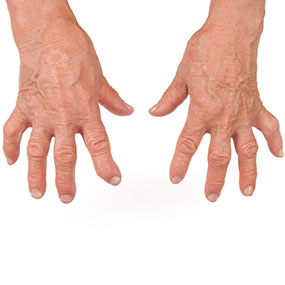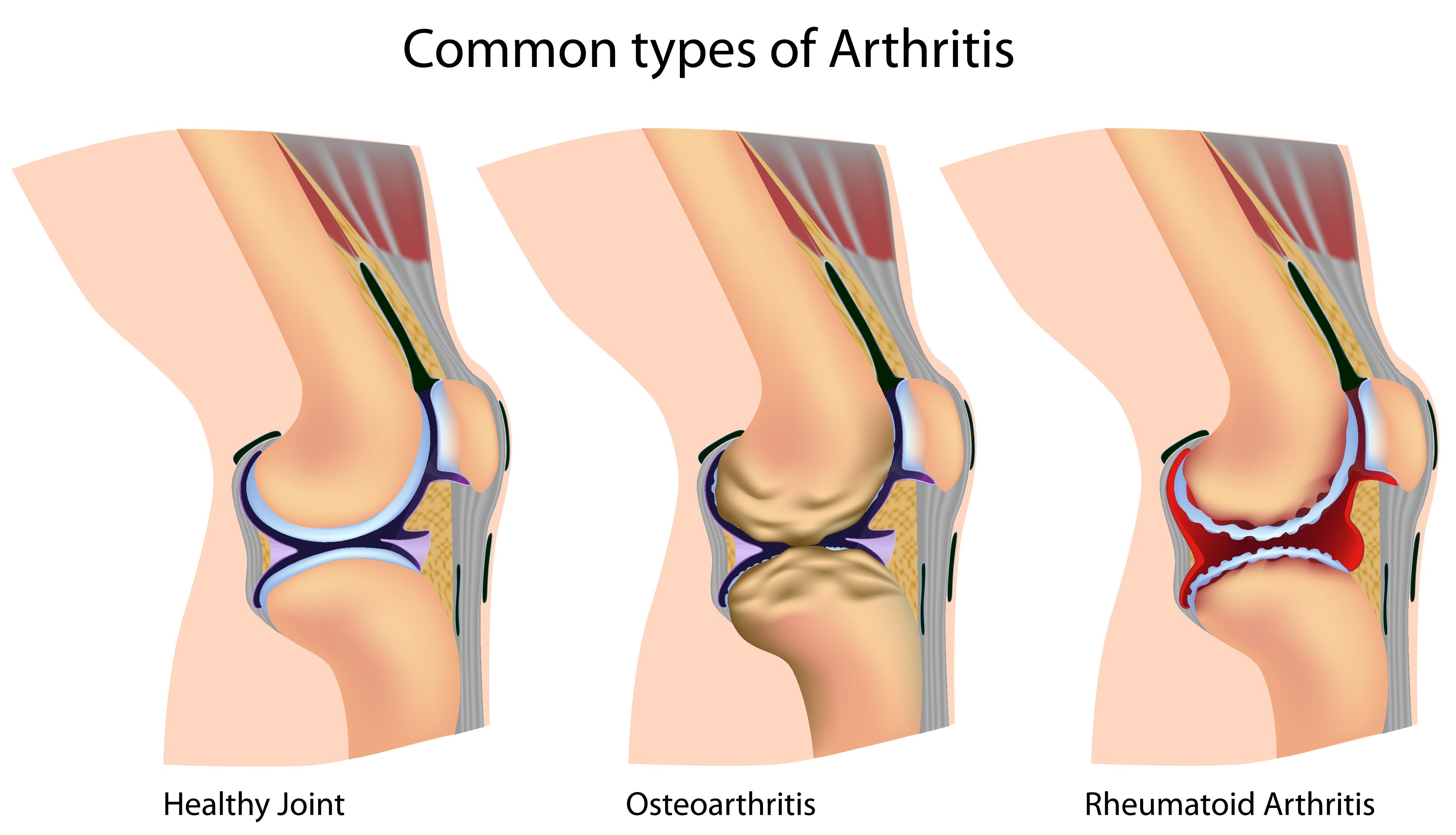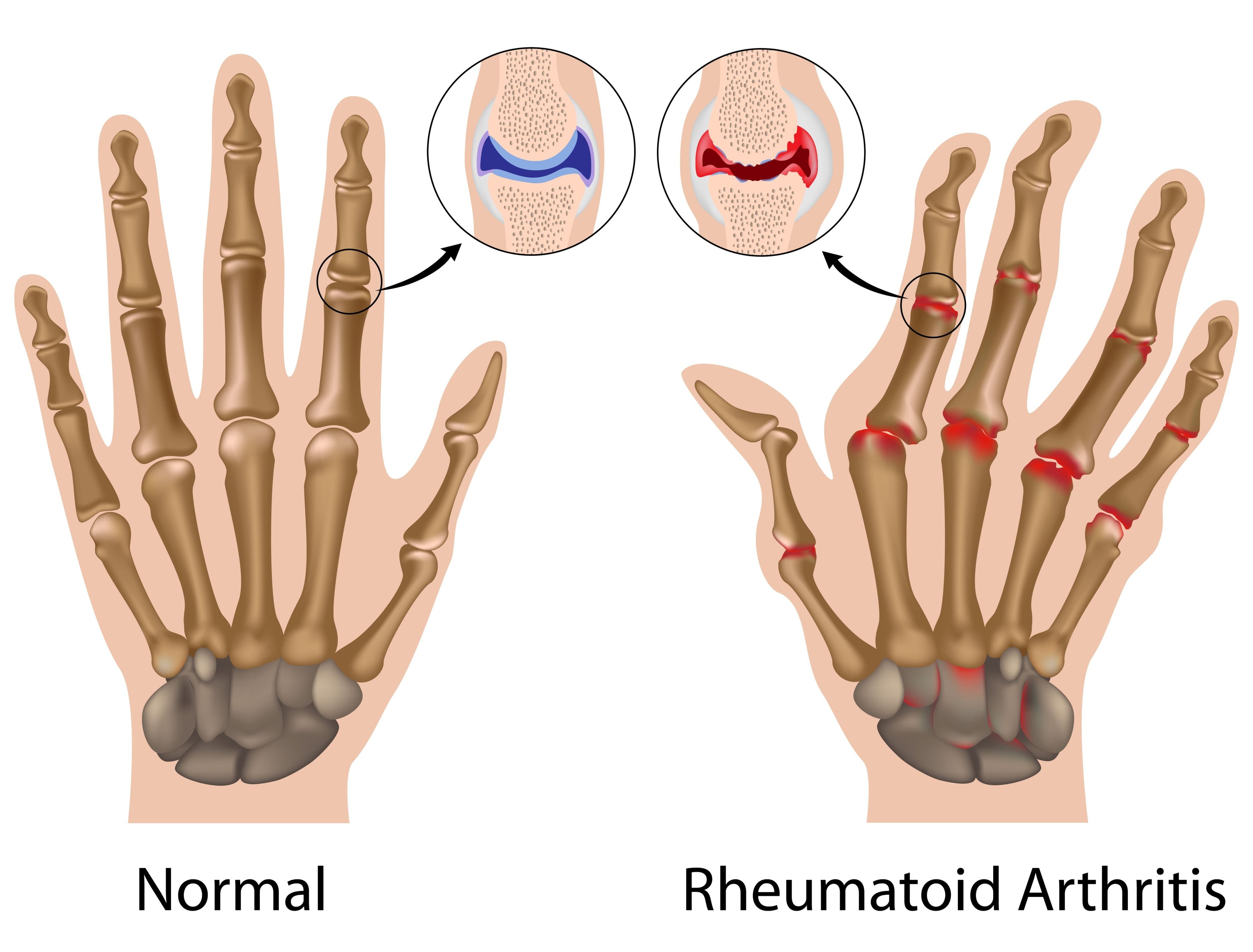
You've probably heard the word "arthritis" before. And now, you may be wondering if it could be affecting you. By definition, arthritis means "joint inflammation," and it's used to describe more than 100 different diseases and conditions that affect joints, the tissues that surround joints, and other connective tissue.
Arthritis can affect people differently. It's common in adults 65 and older, but it can affect people of all ages, races, and ethnic groups. In fact, about 1 out of every 5 adults in the United States — around 50 million people — has reported being diagnosed by their doctor with some form of arthritis.
Osteoarthritis and rheumatoid arthritis have different causes, risk factors, and effects on the body:
Even though they have these differences, osteoarthritis and rheumatoid arthritis often share common symptoms:

Sometimes arthritis symptoms make it harder to do certain activities. By talking to your doctor about your symptoms, he or she may help you find other ways to continue doing some of those activities.
Your doctor can also help evaluate your current treatment and may recommend other, more effective ways to help you manage your arthritis. The sooner you take action and talk to your doctor, the sooner you can start managing your arthritis symptoms more effectively.
What is osteoarthritis?
Often called "wear and tear" arthritis, osteoarthritis (OA) is the most common form of arthritis in the U.S. In most cases, over time, cartilage in joints breaks down, and OA symptoms begin to occur. OA is most commonly found in the:
Wrists, elbows, shoulders, and ankles can also be affected by OA, but this occurs less frequently. When OA is found in these joints, there may have been a history of injury or stress to that joint.

Typically, OA comes on slowly. For many, the first signs are joints that ache after physical work or exercise. As the disease progresses, other most common symptoms include:
If you are experiencing any of these symptoms, it's important to talk to your doctor to find out if you have OA.
OA most often occurs in the following areas:
Knees
Because knees are primarily weight-bearing joints, they are very commonly affected by OA. If you have OA in your knees, you may feel that these joints are stiff, swollen, and painful, making it hard to walk, climb, and get in and out of chairs and bathtubs.
Hips
OA in the hip can cause pain, stiffness, and severe disability. Hips both support the weight of the body and enable movement of your lower body. When you have OA in your hips, you may also feel the pain in your groin, inner thigh, or knees. OA in the hip can lead to difficulty moving, bending, and walking.
Fingers and Hands
When OA occurs in hands and fingers, the base of the thumb joint is commonly affected and people experience stiffness, numbness, and aching. Other symptoms of hand and finger OA include:
Spine
If you have OA of the spine, you may experience stiffness and pain in the neck or in the lower back. Sometimes arthritis-related changes in the spine can put pressure on the nerves, causing weakness or numbness in your arms or legs.
While the exact cause of OA is unknown, joint damage can be due to repetitive movement (also known as "wear and tear"). It can also begin as the result of an injury. Either way, with OA there's erosion of the cartilage, the part of the joint that covers the ends of the bones.

Here are some factors that may increase your risk of developing OA:
Age
Age is the strongest risk factor for OA. Although OA can start in young adulthood, in these cases, it is often due to joint injury.
Gender
OA affects both men and women. However, before age 45, OA occurs more frequently in men; after age 45, OA is more common in women.
Joint injury or overuse caused by physical labor or sports
Traumatic injury to a joint increases your risk of developing OA in that joint. Joints that are used repeatedly in certain jobs may be more likely to develop OA because of injury or overuse.
Obesity
The chances of getting OA generally increase with the amount of weight the body’s joints have to bear. The knee is particularly affected because it is a major weight-bearing joint.
Joint Alignment
People with joints that don’t move or fit together correctly, like bowlegs, dislocated hips, or double-jointedness, are more likely to develop OA in those joints.
Heredity
An inherited defect in one of the genes responsible for manufacturing cartilage may be a contributing factor in developing OA.
If you experience joint pain, stiffness, and/or swelling that won't go away, you should make an appointment to see your doctor. Your doctor will be able to determine if you have arthritis and, if so, what type.
When you see your doctor about your symptoms, he or she may ask questions about when and how you started experiencing them. The doctor will probably give you a physical examination to check your general health, and examine the joints that are bothering you.
You may also need other tests to help confirm the diagnosis of OA and determine the extent and severity of joint damage. Some of these may include:
If you are experiencing some of these symptoms, the sooner you talk to your doctor, the sooner you may get diagnosed and get treatment.
What is Rheumatoid arthritis
Rheumatoid arthritis (RA) is an autoimmune disease where the body's immune system attacks normal joint tissues, causing inflammation of the joint lining.
This inflammation of the joint lining (called the synovium) can cause pain, stiffness, swelling, warmth, and redness. The affected joint may also lose its shape, resulting in loss of normal movement. RA is an ongoing disease, with active periods of pain and inflammation, known as flares, alternating with periods of remission, when pain and inflammation disappear.
RA can affect many different joints. In some people, it can even affect parts of the body other than the joints, including the eyes, blood, the lungs, and the heart.
Although RA is often a chronic disease, the severity and duration of symptoms may unpredictably come and go. With RA, people experience periods of increased disease activity, calledflare-ups or flares, alternating with periods when the symptoms fade or disappear, called remission.
If you experience some of these symptoms, you may want to talk to your doctor:
As RA progresses, about 25% of people with the disease develop small lumps of tissue under the skin, called rheumatoid nodules, which can vary in size. Usually, they are not painful.
If you are experiencing any of the symptoms described above, it is important to find out from a doctor if you have RA.
The exact causes of RA are unknown. But research has shown that several factors may contribute to the development of RA:
Rheumatoid arthritis can cause joint inflammation, which can affect the ability to go about your daily activities. If left untreated, RA can worsen and destroy joints. After the onset of the disease, some of the effects of RA are as follows:
If you have persistent discomfort and swelling in multiple joints on both sides of your body, make an appointment to see your doctor. Early diagnosis and treatment can help slow disease progression.
When you see your doctor about your symptoms, he or she may ask questions about your medical history and examine the joints that are bothering you. Your doctor will also decide if you need other tests to help confirm the diagnosis of RA and determine the extent and severity of joint damage. These may include:
Blood Tests
X-rays
If you have joint pain, stiffness, and/or swelling that won't go away, you may have arthritis. Talk with your doctor about your symptoms.
Treatment Options
You can take part in managing your arthritis by knowing what your treatment options are. An informed decision made with your doctor can be one of the best decisions you can make to help you get effective symptom relief.
It's important to understand that although there is no way to reverse the cartilage loss of osteoarthritis or rheumatoid arthritis, there are treatment options available to help you relieve the symptoms. These can include:
Your doctor may even suggest combining several treatment options to more effectively manage your arthritis symptoms. Every situation is different, so discuss your symptoms and your lifestyle with your doctor so you can work together for the best option or options for you.

Dr. Vikas Chhabra is Specialist in General Surgery & have 22 Yrs Experience in General, Laproscopic, Endourology, Plastic & Laser Surgeries.

Dr. Kiran Chhabra is famous Consultant of IVF, She is Specialist in Gynaecology & practicing Gynae, Obs & Infertility since 2003.

Dr. Aman Chhabra is famous Orthopedic Surgeon, He is Specialist in Ortho, Hand Surgery & Joint Replacement and have more than 15 Yrs Experience.
View More
Test Tube Baby Centre
Operation Theatre
Ventilator
ICU
OPD
Ultrasound
Colour Doppler
Laboratory
Patient Rooms
Pharmacy
24 Hours Service
Chhabra Hospital &
Test Tube Baby Centre
Near Stadium,
80 Feet Road,
Bathinda (Punjab)
Pin: 151001